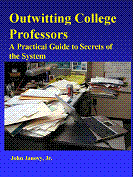Papers in the Biological Sciences

John J. Janovy, Jr. Publications
Document Type
Article
Date of this Version
6-2008
Abstract
This study was designed to explore the nutritional relationship between Gregarina confusa (Apicomplexa: Eugregarinida) parasites and its coleopteran host, Tribolium destructor, by measuring the cytoplasmic density of gregarines in continuously fed larvae, starved larvae, and larvae refed after starvation. Cultures were maintained in a standard media (whole wheat flour:commercial wheat germ:yeast [30:10:1]). Larvae from control and experimental groups were dissected daily for three days then allowed to feed or starve for an additional three days. On day 6, the remaining experimental larvae were divided and placed into two groups; one group remained starved while larvae from the second group were fed a WheatiesR flake. Photographs were taken of the parasites daily and analyzed using ScionImage™. Gregarines from starved larvae were significantly longer and skinnier than those from fed controls, and there was also a significant difference between gregarine deutomerite cytoplasmic densities. Parasites from refed larvae regained cytoplasmic density within 24 hr and showed morphological similarities to those from fed larvae. This study shows that the Tribolium destructor–Gregarina confusa relationship can be manipulated easily through alterations of host diet and thus is an excellent model for use in the study of chemical relationships between parasites and their hosts.


Comments
Published in the Journal of Parasitology (June 2008) 94(3): 567-570. Copyright 2008, the American Society of Parasitologists. Used by permission.